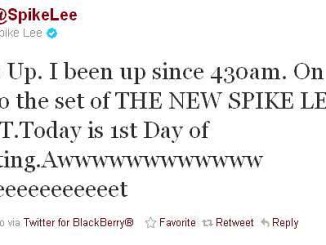 David Byrne’s American Utopia debuts on HBO and HBO Max on October 17.
David Byrne’s American Utopia debuts on HBO and HBO Max on October 17.
The 1984 concert movie Stop Making Sense is considered one of the highlights of the genre. Filmed at one of the closing engagements of what would be the band Talking Heads’ final tour, director Jonathan Demme captured the band’s performance as not some cinema verite documentary but as a cinematic event. It is often the yardstick which other concert films are often measured against.
So as a Talking Heads fan I did approach David Byrne’s American Utopia, the new concert film that captures the Talking Heads lead singer’s recent Broadway show, with at least a modicum of trepidation. But fans and non-fans alike need not worry about American Utopia paling in comparison to Stop Making Sense. This is new concert film is just as considered, artistic and energetic as its forerunner, maybe a bit more so, as American Utopia as a show has some thematic layers that Stop Making Sense never thought to consider.
To be sure, there are some similarities between Stop Making Sense and American Utopia. Both shows start off with Byrne alone on a bare stage for the first number, though in American Utopia he is behind a small desk, recalling Spalding Gray’s spoken word performance film Swimming To Cambodia. In that way, this sets up the spoken word pieces that bracket groups of songs. And like the expanded lineup of musicians Talking Heads sported in Stop Making Sense, Byrne’s backing band here is a diverse group of world music musicians. And of course Byrne is still as geekily awkward on stage as he has always been.
American Utopia opens with “Here,” a song that maps out the sections of the human brain in verse. Byrne follows that up with his first spoken word segment in which he talks briefly about how the human brain sheds neural connections as we age. “Does this mean that babies are smarter then we are?” he ponders. “And as we grow up we get stupider and stupider and stupider until we reach a plateau of stupidity which is where most of us are now?” But he goes on to describe how those surviving connections define us as to who we are.
This is actually the first stop of the show’s thematic journey, one which will have us contemplating how we regard and treat our neighbors and fellow countrymen and how we may define community. This is reinforced by the dryly sardonic “Don’t Worry About The Government” which dates to the earliest days of Talking Heads and “Naive Melody (This Must Be The Place).” As he introduces the Talking Heads’s musical resetting of Hugo Ball’s dadaist poem, Byrne tells us that the dadaist poets were using nonsense to make sense out of a world that didn’t make sense. “Their artistic aims were to remind the world that there were people of different independent minds beyond war and nationalism who lived for different ideals,” he states.
As Byrne introduces “Everybody’s Coming To My House,” he notes how a Detroit high school choir performed the song and made it, without changing anything about it, sound joyous while he always felt that his performance revealed a singer who was someone full of anxiety. He then introduces his current onstage band, and by noting that they are from all around the world, Byrne is immediately re-contextualizing the song into a comment on immigration and perhaps how age hardens some to outsiders and people not like themselves.
And if you’re wondering about the seeming incongruity about a director like Spike Lee overseeing the filming of the show, that becomes apparent in “I Should Watch TV” when Byrne sings “How am I not your brother? How are you not like me?” as a picture of Colin Kapernack is projected behind him. Later, Byrne gets even more political as he introduces “Hell You Talmbout,” which Janelle Monate performed at the Washington DC Women’s March, as both a protest and a requiem for the far too many African-Americans lost to violence. But he remains sanguine that things will improve in the long run. “I also see the song being about the possibility of change,” he states. “Not just in the imperfect world out there but in myself too.” Appropriately, Byrne follows this song up with the song “One Fine Day,” which promises that everything “can change on one fine day,” pretty much bringing the show’s thematic arc to a close.
As a live performance, American Utopia is spectacular, even as it eschews virtually any kind of stage dressing. Byrne and his eleven musicians and dancers appear on a bare stage, bordered only by chain-like curtains on three sides. Lighting cues define boundaries on the stage and Byrne has traded in his trademark Stop Making Sense big suit for a regular-sized, three-button grey one. All of the musicians carry their instruments with them as they move about the stage and Byrne talks about how being “untethered” in this manner is “liberating” as it allows people to look at the thing they like to look at the most, “other people.”
Much of American Utopia is choreographed – think marching band meets rock band – courtesy of post-modern dancer and Artistic Director of Brooklyn’s Big Dance Theater Annie-B Parson. But despite that formalism, the show never loses any of the dance party energy that encompasses much of Talking Heads and David Byrne’s solo music. In this case, to quote Byrne in the best possible way, it’s the same as it ever was. And that is pretty damn good.





